Join More Than 50,000+ Subscribers and get latest camera news and rumors
NEW CAMERA VIDEOS ON YOUTUBE
|
By admin, on November 14th, 2023
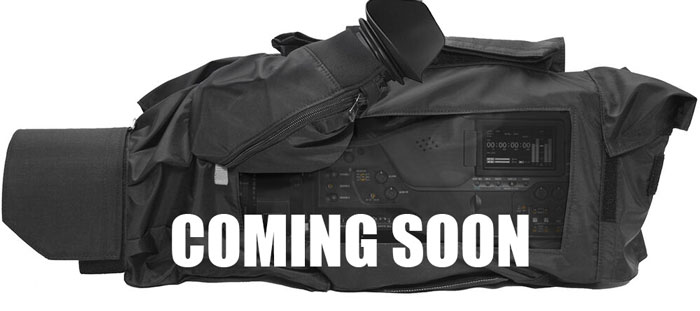
Although The name of the camera isn’t confirmed yet take a look at what Source has to say about the upcoming Pro Video camera from Sony
PXW-Z750 users will be delighted with the larger sensor version, which will be positioned next to XDCAM 6K and CineLine. Global shutter, full-frame oversampling/S35 point-to-point DCI&UHD 4K/120p, S35 oversampling FHD/240p, does not support X-OCN internal recording.
The 15+ stop IQ of FX9 is maintained, but the base ISO is raised to F55-level ISO2000, and the second ISO is set to 6400, which is slightly higher than FX9’s 5120. It seems to be a stage scene with PXW-Z750 and PXW-FX9M2 dual broadcast cameras.
However, I don’t think Sony should promote a global shutter-based FX9 at the time when the BURANO series is Available.
Stay tuned we will bring more updates as soon as they become available to us
The Post “Details about Sony Upcoming Professional Video Camera” was first appeared on thenewcamera.com
source
By admin, on November 14th, 2023
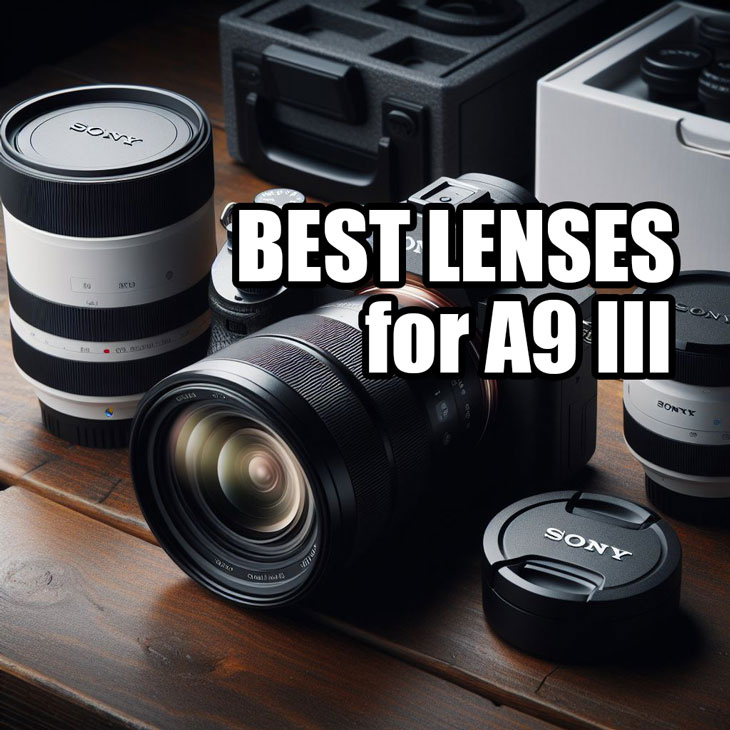
Let’s talk about the set of lenses that support the Sony A9 Mark 3 camera’s 120 frames per second continuous shooting with full-time autofocus and auto exposure support.
As you may notice, none of the third-party lenses are present in this list since Sony limits the continuous AF support of third-party lenses up to 15 to 20 frames per second. You can use those lenses, but the continuous AF will remain limited to 15 to 20 frames. If you use Sony native lenses, then the AF calculation will support synchronization up to 120 frames.
By admin, on November 11th, 2023
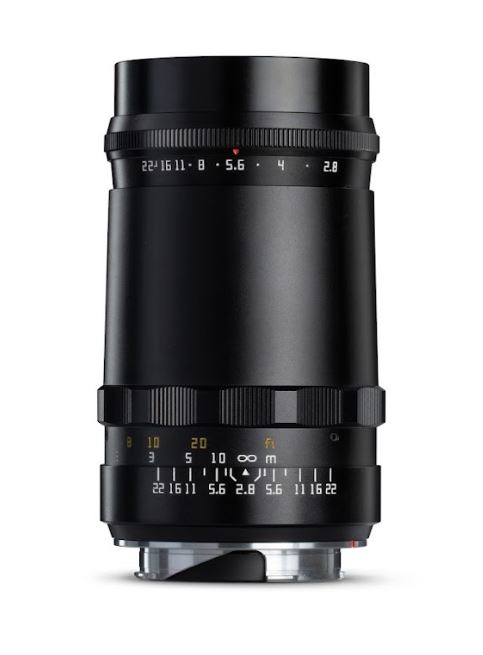 TTartisan has announced its second mount for the TTartisan 100mm F2.8 Soap Bubble Bokeh Lens–Leica M Mount. Well adapted to all the micro-single mount, such as Sony E, Canon RF, Fujifilm X, Nikon Z and Leica L. TTartisan has announced its second mount for the TTartisan 100mm F2.8 Soap Bubble Bokeh Lens–Leica M Mount. Well adapted to all the micro-single mount, such as Sony E, Canon RF, Fujifilm X, Nikon Z and Leica L.
Sample Images

Sample Images of the Bubble Bokeh Lens
Buy from amazon.com – TTartisan 100mm F2.8 Full-Frame Soap Bubble Bokeh Lens
By admin, on November 9th, 2023
Sony A9 III camera sample images. Finally, we have the official sample images of the Sony A9 III camera. Let’s analyze the sample images and see how the new 24.6-megapixel sensor performs with the global shutter technology. The sensor is able to preserve a good amount of the range in the images and its slow-motion performance is perfect
Sony A9 III SAMPLE IMAGE 1
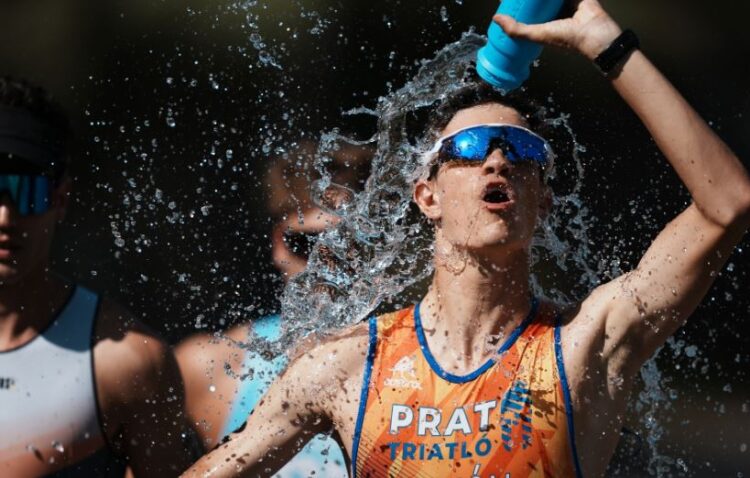
Download high-res Image
| Lens name |
FE 400mm F2.8 GM OSS |
| Lens focal Length |
400 mm |
| 35mm equivalent focal length |
400 mm |
| Shutter speed |
1/16000 sec. |
| F number |
F2.8 |
| Exposure correction value |
+0.0 EV |
| Exposure program |
Manual exposure |
| Metering mode |
Multi segment |
| ISO |
400 |
| White balance settings |
Auto white balance |
So we have 8 images coming straight out from the Sony A9 III camera. Let’s analyze a special one that we see in the list, captured at 1/16000 of a second. This is not normal for a general mirrorless camera, as it doesn’t have that much shutter range. So let’s look at what this image looks like and see if the camera can preserve sharpness at 1/16000.
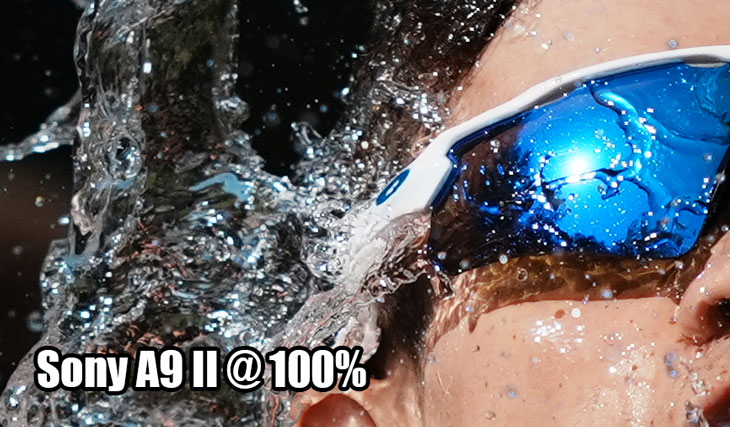
At 100% scale, you can see every bit of the image is very expressive, and the details of the image are very well preserved.
Sony A9 III SAMPLE IMAGE 2
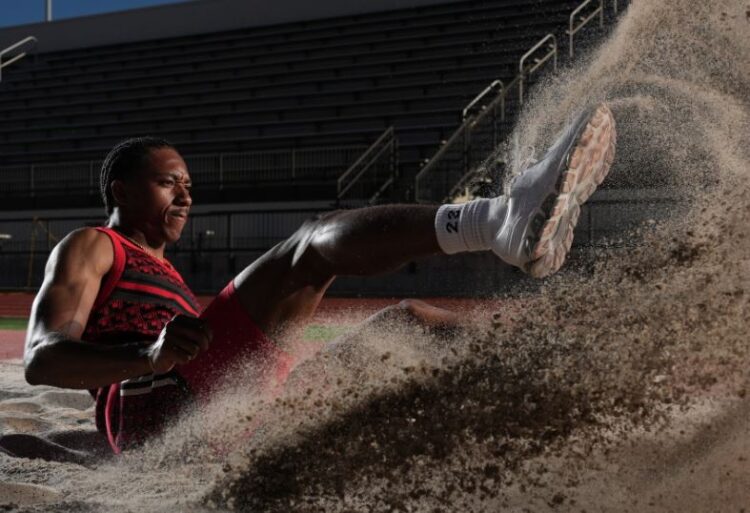
Download high-resolution images from here
| Lens name |
FE 24-70mm F2.8 GM II |
| Lens focal Length |
53 mm |
| 35mm equivalent focal length |
53 mm |
| Shutter speed |
1/6400 sec. |
| F number |
F8 |
| Exposure correction value |
+0.0 EV |
| Exposure program |
Manual exposure |
| Metering mode |
Multi segment |
| ISO |
400 |
Now in the second image, you can see an action sequence captured at a shutter speed of 1/6400 of a second. Even after that, the details in the eyes are intact, as you can see in the 100% scaled image below.
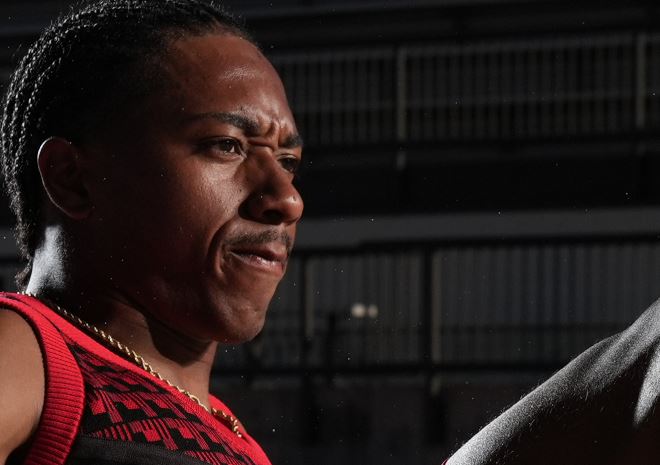
When we lift the shadows of the JPEG file, all the details are available, If RAWs are available then it will be at a completely different latitude. Even if we try to apply the shadows in the available Jpeg file, the result is phenomenal. We have a lot of details hidden in the shadows, a lot of color information that is there, and if exposed correctly, it can be a true HDR image. So the capability of the 24.6-megapixel global shutter sensor is very clearly visible in the sample images, as stated by Sony.
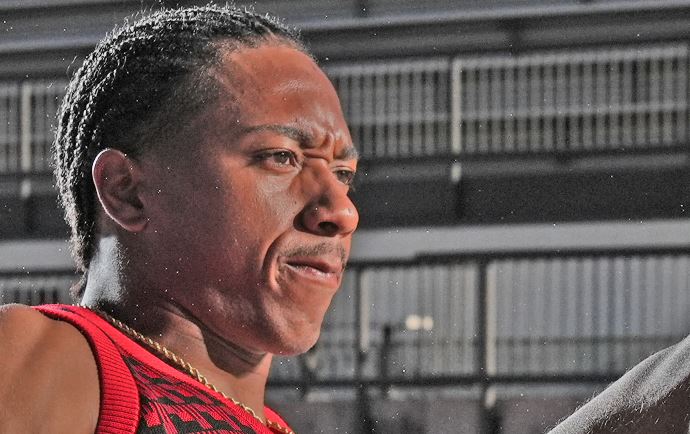
SONY A9 III SAMPLE IMAGE 3
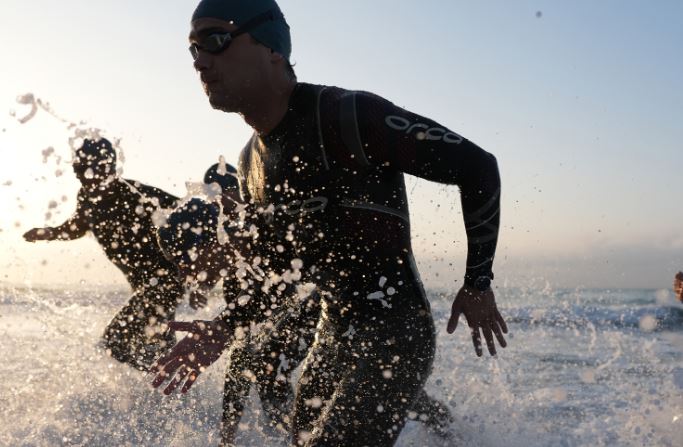
Download High Res Samples From Here
| Lens name |
FE 24-70mm F2.8 GM II |
| Lens focal Length |
24 mm |
| 35mm equivalent focal length |
24 mm |
| Shutter speed |
1/6400 sec. |
| F number |
F2.8 |
| Exposure correction value |
+0.0 EV |
| Exposure program |
Manual exposure |
| Metering mode |
Multi segment |
| ISO |
640 |
| White balance settings |
Auto white balance |
In this third sample image, you can see swimmers running on the beach side with the sun opposite to the camera. The image was captured at a very high shutter speed of 1/6400 of a second, with an aperture of f/2.8, a focal length of 24mm, and a 24-72.8 G Master Mark 2 lens. First, we have to see the image at 100% scale, and you can see the surface is on point. But the most interesting part of this image is when you look up and left, and then you will see the result
Sample image 3 @ 100% scale
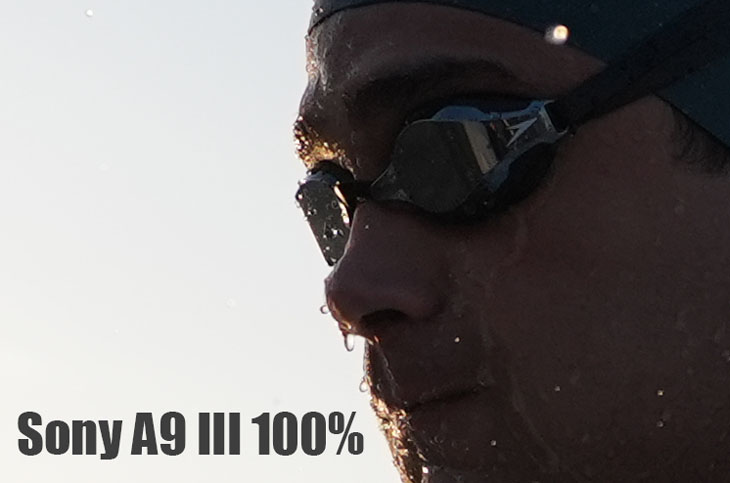
Now, let’s take a look at the 3rd sample image of the Sony A9 III camera. The JPEG files of these sample images can preserve a lot more detail in completely shadowed areas. If raw samples were available, you can just imagine the level of shadow details we can pull from that file. BTW, the JPEG files are capable of preserving a lot of details that are visible in the sample images. This is a testament to the capability of the 24.6-megapixel global shutter sensor of the Sony A9 III camera.
Its showtime, see the amount of details visible at 100% scale in completely dark areas captured behind the sun. It can be processed, more details can be re-constructed with AI tools, while seeing all these, I can assure you Sony A9 III 24.6 MP sensor does have a very good DR range without a doubt. And soon we will publish the test results too as they become available to us.
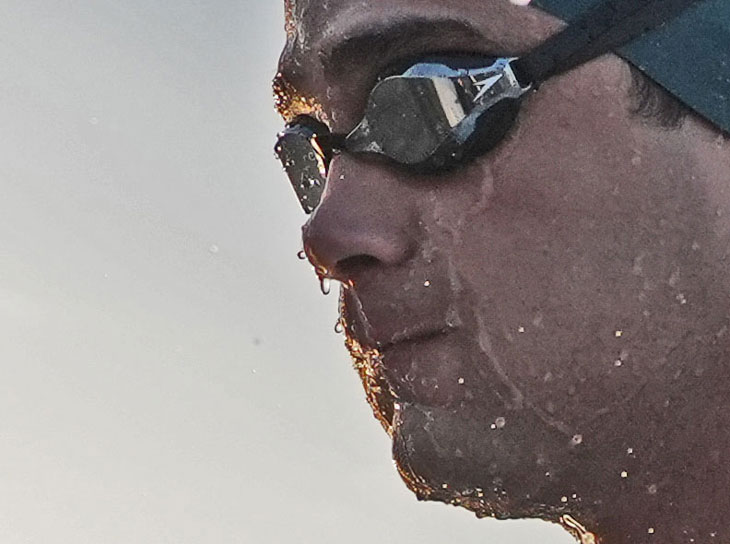
Get a Sony A9 Mark III camera from B&H Store
Follow us on our social pages FACEBOOK | TWITTER | INSTAGRAM, If you have time –>see more Sony Alpha Rumor
By admin, on November 3rd, 2023
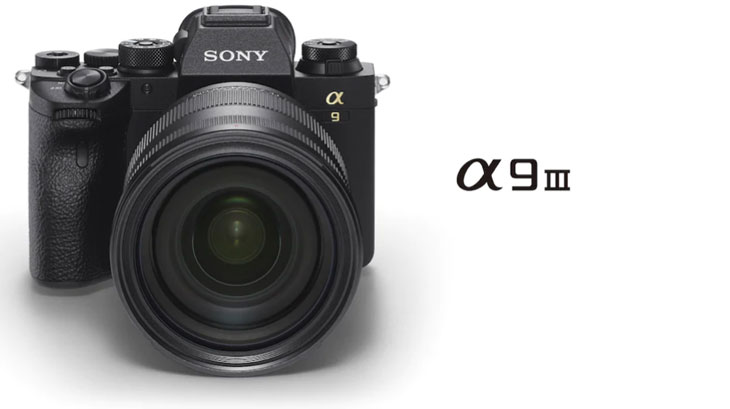
What we have seen in the past, 10 to 15 days before any official announcement of a Sony camera, leaked images and a full set of core specifications are generally available all over the web via the rumor mills. As of November 3, there is no concrete information available related to the upcoming camera, nor any leaked images. It indicates that there is a huge possibility that the A9 Mark III camera is not coming on November 8. And that’s why Rumor mills are saying that A9 III will delay, see more details below
According to the latest rumors, the Sony A9 Mark 3 camera announcement may get delayed, and the next possible date is sometime around January 2024. The rumored specifications and announcement date of the Sony A9 Mark III camera are as follows:
Sony A9 III rumored specification
- 33 megapixel full-frame stacked sensor
- 40 fps 12-bit raw
- 30 fps 14-bit raw
- 4K 24/25, 30, 50/60 fps
- 1080 24/25, 30, 50/60, 100,120 fps
- No 8K video
- No mechanical shutter
- Sony A1 design and ergonomics
- Price: $4,498
- November 8, 2023 announcement (expected to arrive in Jan 2024*)
If you look at the price of the camera then for sure the camera price is higher than the competition, compared to the specs of the Nikon Z8 camera the overall rumored specs of the Sony A9 III, that we see right now look slightly inferior without a doubt.
We were expecting at least the introduction of a 50-megapixel sensor to compete against Z8 of Sony Alpha A1 in the body of the Sony A9 Mark III with some limitations (to protect the sales of the Sony Alpha A1 camera). At least with the 50 MP sensor and advanced Dual Bionz X processor, the camera will be able to compete with the Nikon Z8 camera.
Our expectations with the Sony A9 III
- 50MP Full-Frame Exmor RS BSI CMOS Sensor
- Up to 60 fps Shooting, ISO 50-102400
- 8K 30p and 4K 120p Video in 10-Bit
- 3.7 m-Dot EVF (Blackout free)
- 759-Pt. Fast Hybrid AF, Real-time Eye AF
- 5-Axis SteadyShot Image Stabilization
- Dual CFexpress Type A/SD Card Slots
Share your thoughts in the comment box below
Follow us on our social pages FACEBOOK | TWITTER | INSTAGRAM, If you have time –>see more Sony Alpha Rumor
source SAR website
By admin, on November 1st, 2023
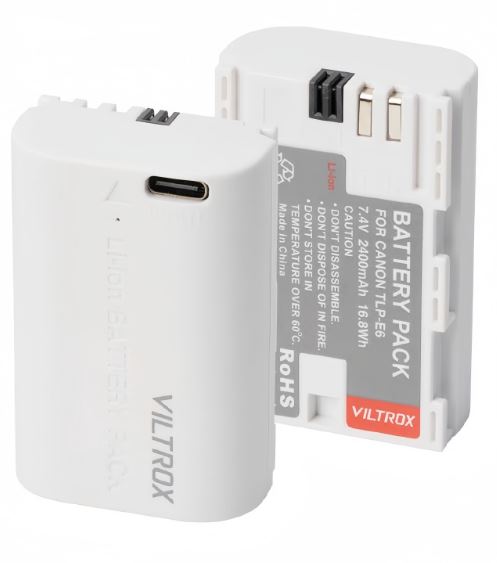
Viltrox will soon announce a new series of batteries for cameras. These batteries are made for Canon, Fuji, and Sony cameras respectively.
- Canon TLP-E6,
- Fuji TNP-W235,
- Sony TNP-FW50, and
- TNP-FZ100
All of these batteries offer direct Type-C charging, so you don’t have to buy an additional charger for them.
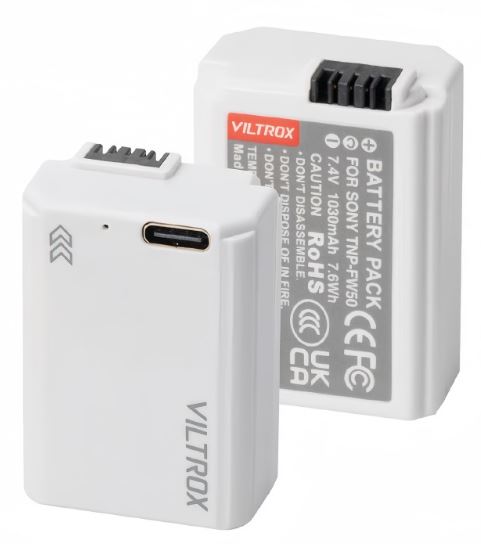
By admin, on October 29th, 2023
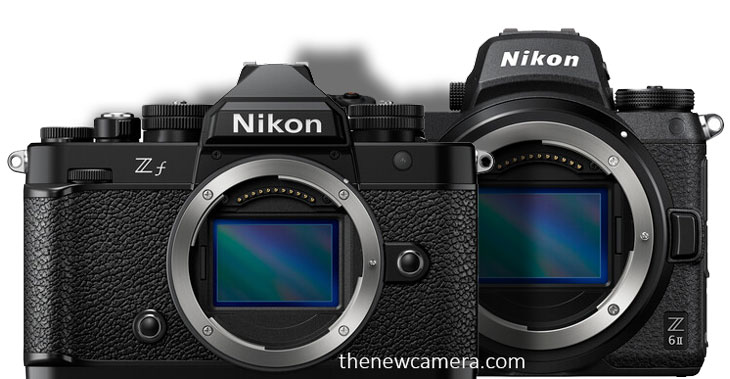
Let’s compare the two full-frame cameras that fall almost in the same price range: the Nikon ZF and the Nikon Z6 Mark II. We will try to find out the best camera for you according to the core differences between them and the body design type.
Apart from the basic specs differences, in the design part, the Nikon ZF camera is a kind of retro-style camera with extensive manual controls. The look of the camera is really brilliant and very attractive for a professional photographer. Without a doubt, if you have to compare the look of both cameras, ZF is a clear winner.
| Feature |
Nikon ZF Camera |
Nikon Z6 Mark II Camera |
| Display Screen |
Vari-angle-adjustable |
Tilting |
| Top LCD Display Screen |
Mini Display |
Large |
| Full Size HDMI |
Yes |
No |
| Black and White Mode |
Dedicated black and white mode with two different options: Flat mono and Deep tone mono |
Normal black and white mode |
| Memory Card Slots |
Dual card memory slots with one slot for UHS-II and the other for MicroSD UHS-I |
Dual card memory slots with one slot for CF Express Type B cards and the other for UHS-II cards |
1. VLOGGERS FRIENDLY
The Nikon ZF camera features a vari-angle-adjustable display screen on the rear side of the camera. This screen not only helps photographers to have compositional freedom, but it is also very helpful for content creators who create online content for YouTube, Instagram, or TikTok.
In contrast, the Nikon Z6 Mark II camera has a tilting display screen on the rear side of the camera, which is not as helpful for content creators. It also limits the compositional freedom of a photographer. feature that is absent in the Nikon ZF camera is the top LCD display screen that you find in the Nikon Z6 Mark II. The Nikon ZF has a smaller display screen that shows the aperture value of the lens when the camera is on. This could be a consideration depending on your specific needs and preferences in a camera.
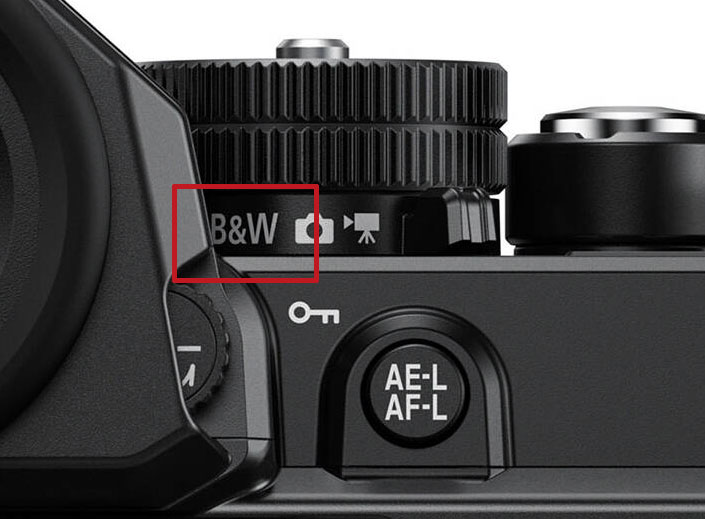
2. BLACK AND WHITE
Dedicated black and white mode present in the Nikon ZF camera. Now, what is so important about this black and white mode or the monochrome of the Nikon ZF camera? The Nikon ZF camera monochrome profile features two different options: one is Flat mono and the other is Deep tone mono. The Deep tone mono accentuates red details in the scene. Both of them can be used in stills as well as in video footages. So, it is not just a normal black and white mode that we see in a normal Nikon camera. It does have profiles and in the future, we may have more profiles added to the mono through updates.”
3. MEMORY CARD SLOTS
The Nikon ZF camera and the Nikon Z6 Mark II camera both have dual card memory slots. However, in the Nikon ZF camera, due to the compact design, engineers have included a Micro SD card slot. So, one card slot is for UHS-II, and the other card slot is for MicroSD UHS-I. This is highly suitable for photographers for keeping a backup file.
In the Nikon Z6 Mark II camera, we have two different card slots. One accepts CF Express Type B cards and the other is designed for UHS-II cards. Now it depends on you whether you want to invest in CF Express Type B cards or you want to invest in UHS-I and Micro SD cards. The latter could be a more affordable option for you if you are a photographer.
| Feature |
Nikon ZF |
Nikon Z6 Mark II |
| Sensor |
24-megapixel FX format full-frame CMOS sensor |
24-megapixel FX format full-frame CMOS sensor |
| Image Processor |
Uses the advanced Expeed 7 image processor, same as in the Nikon Z9 flagship camera |
Uses an older image processor |
| High-Efficiency RAW |
First NIKON camera in this price range to feature high-efficiency RAW compression, allowing shooting in 10-bit HEIF format, an alternative to standard 8-bit JPEG images |
Does not have this feature |
| High-Resolution Mode |
Features a multi-shot pixel shift high-resolution mode, able to capture images up to 96 megapixels with the help of its advanced image stabilization system |
Does not have this feature |
| Image Stabilization |
Very advanced, uses an AI algorithm to optimize the performance of the sensor-shift image stabilization unit. The IS system moves along with the autofocus point of the camera, offering off-center image stabilization support |
Does not offer off-center image stabilization support |
4. SENSOR OF BOTH THE CAMERA
Both the Nikon ZF and the Nikon Z6 Mark II cameras feature the same 24-megapixel FX format full-frame CMOS sensor. However, the biggest difference is created by the image processor used in both cameras. The Nikon ZF features a very advanced image processor, the Expeed 7, which is the same image processor being used in the Nikon Z9 flagship camera.
5. High-Efficiency RAW
After the Nikon Z9 and Nikon Z8, the Nikon ZF camera is the first camera to feature high-efficiency RAW compression, which is possible with the introduction of the new Expeed 7 image processor inside the camera. The high-efficiency RAW format allows a photographer to shoot 10-bit in HEIF format, which is a perfect alternative to the standard 8-bit JPEG images.
6. A 96 MP HIGH-RESOLUTION MODE
The Nikon ZF camera features a multi-shot pixel shift high-resolution mode. With the help of its advanced image stabilization system, the camera is able to capture higher resolution images up to 96 megapixels, which is certainly not possible with the Nikon Z6 Mark II camera
7. iMAGE STABILIZATION ATTACHED WITH AF POINT
The image stabilization of the latest Nikon ZF camera is very advanced and uses an artificial intelligence algorithm to optimize the overall performance of the sensor-shift image stabilization unit. The camera’s IS system moves along with the autofocus point of the camera, so the center of stability moves along with the subject in focus. Currently, no other camera offers off-center image stabilization support like the Nikon ZF does.
| Feature |
Nikon ZF |
Nikon Z6 Mark II |
| Autofocus System |
Uses the latest Expeed 7 image processor and advanced AI autofocus algorithms. Able to track a wide variety of animals and vehicles. The autofocus system covers approximately 96% of the horizontal axis of the image area3. The AF sensitivity extends down to -10EV. |
Uses an older image processor. Recognition is limited to humans and animals. The autofocus system covers approximately 90% of the sensor area. |
| AF Sensitivity |
Able to autofocus up to -10 EV, allowing it to shoot in nearly dark environments. |
Autofocus sensitivity is limited to -4.5 EV4. |
| Continuous Shooting Speed |
Maximum shooting speed is 30 fps in C30 mode. Able to capture RAW files of any type up to 14 fps. |
Maximum shooting speed is 14 fps for 12-bit RAW images and 10 fps for 14-bit RAW images. |
8. Autofocus
Both cameras feature the same sensor with the same number of hybrid autofocusing points, but the big difference is the type of image processor used in each camera. The Nikon ZF camera uses the latest Expeed 7 image processor. Not only is the image processor new, but the camera also uses advanced artificial intelligence autofocus algorithms that are being used in the Nikon Z9 and Nikon Z8 cameras. The same artificial intelligence AF algorithm is being implemented in the Nikon ZF camera, so the 3D object tracking has improved a lot compared to the Nikon Z8. Now, the camera is able to track a wide variety of animals including birds as well as vehicles like cars, motorbikes, and planes. The Nikon Z6 Mark II camera’s recognition is limited to humans and animals only
9. AF SENSITIVITY LIKE NO OTHER
The autofocus sensitivity of the Nikon ZF camera is the best among all Nikon mirrorless cameras right now. The Nikon ZF is able to autofocus up to -10 EV, whereas the Nikon Z6 Mark II’s autofocus sensitivity is limited to -4.5 EV. This clearly indicates that the Nikon ZF camera is able to shoot in nearly dark environments, which is not possible with the Z6 Mark II. The sensitivity of the Nikon ZF is not only the best in its class, but it is also similar to today’s flagship cameras.
10. CONTINUOUS SHOOTING SPEED
The maximum shooting speed of the Nikon ZF camera is 30 frames per second. To achieve this speed, you have to put your camera in C30 mode where it records video at 30 frames per second and you are able to extract any frame that you like. C30 mode is available in the burst mode of the camera. In contrast, the Nikon ZF camera is able to capture RAW files of any type up to 14 frames per second, whereas the Nikon Z6 Mark II camera is able to capture 14-bit RAW images up to 10 frames per second and 12-bit RAW images up to 14 frames per second. It also gives you an option to record 30 frames per second when it is required.
| Feature |
Nikon ZF |
Nikon Z6 Mark II |
| Videographics Resolutions |
4K videos at 24, 30, and 60 fps (with 1.5x crop or DX crop at 60 fps) |
4K videos at 24, 30, and 60 fps (with 1.5x crop or DX crop at 60 fps) |
| 10-bit Video Recording |
Internally in H.265 codec |
Only possible with HDMI output (requires external recorder) |
| Shutter Priority Mode |
Available (with Manual adjustments to ISO and aperture in Shutter Priority) |
Not available |
| Recording Limit |
Up to 125 minutes for 4K videos at either 24 or 30 fps |
Limited to 30 minutes |
11. Best camera for video
Both the Nikon ZF and Nikon Z6 Mark II cameras feature the same videographic resolutions. Both are able to capture 4K videos at 24 and 30 frames per second without any crop. When you switch to 4K videos at 60 frames per second, you have to face a 1.5x crop or you can set DX crop. The biggest difference you will notice is that the Nikon ZF camera is able to record 10-bit videos internally in H.265 codec, whereas with the Nikon Z6 Mark II camera, 10-bit video recording is only possible with HDMI output. So, if you want 10-bit videos with the Nikon Z6 Mark II camera, you have to use an external recorder, whereas with the Nikon ZF, you can record 10-bit videos directly onto your memory card.
The Nikon ZF camera also allows you to record your video in shutter priority mode with automatic adjustments to ISO and aperture, meaning a bit more manual control is unlocked in the ZF body compared to the Z6 Mark II.
12. NIKON Z6 MARK II 30 MIN RECORDING LIMIT
The recording limit in the Nikon Z6 Mark II camera is 30 minutes, whether you are shooting a full HD video or recording a 4K movie. On the other hand, with the Nikon ZF, you can record up to 125 minutes without any interruption for 4K videos at either 24 or 30 frames per second
Conclusion
if you look at the detailed comparison then if you are a photographer for a videographer without a doubt Nikon ZF camera is more suitable for you.
|
KEEP THIS BLOG ALIVE - Support New Camera Buy Canon Lenses, Buy Music CD or Digital Camera at amazon it helps this site, and you do not pay anything extra, it is just a way to help support this site.

|



 TTartisan has announced its second mount for the TTartisan 100mm F2.8 Soap Bubble Bokeh Lens–Leica M Mount. Well adapted to all the micro-single mount, such as Sony E, Canon RF, Fujifilm X, Nikon Z and Leica L.
TTartisan has announced its second mount for the TTartisan 100mm F2.8 Soap Bubble Bokeh Lens–Leica M Mount. Well adapted to all the micro-single mount, such as Sony E, Canon RF, Fujifilm X, Nikon Z and Leica L.

















